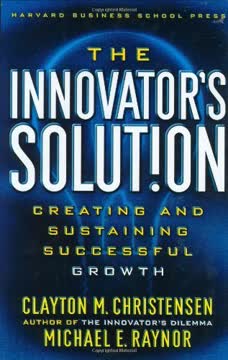Key Takeaways
1. Disruptive technologies often start in small, overlooked markets
Disruptive technologies typically enable new markets to emerge.
Small beginnings, big impacts. Disruptive technologies often emerge in small, low-end markets that established firms overlook or consider unprofitable. These technologies initially underperform in mainstream markets but excel in new applications. Examples include:
- Personal computers: Initially seen as toys, they disrupted minicomputers and mainframes
- Hydraulic excavators: Started in small construction projects, eventually overtook cable-actuated machines
- Disk drives: Smaller drives began in emerging markets (e.g., portables) before invading established ones
As these technologies improve, they eventually meet mainstream market needs, often at a lower cost or with added convenience, leading to industry upheaval.
2. Established firms struggle with disruptive innovations due to resource allocation
Managers played the game the way it was supposed to be played. The very decision-making and resource-allocation processes that are key to the success of established companies are the very processes that reject disruptive technologies.
Resource allocation shapes innovation. Established companies struggle with disruptive technologies not due to technological incompetence, but because of their resource allocation processes. These processes are designed to support:
- High-margin products
- Large markets
- Existing customers' needs
Disruptive innovations often:
- Offer lower margins
- Target smaller, undefined markets
- Don't meet current customers' needs
Consequently, disruptive projects consistently lose out in the competition for resources within established firms, even when senior management supports them.
3. The innovator's dilemma: Good management can lead to failure
Sound execution, speed-to-market, total quality management, and process reengineering are similarly ineffective.
Success breeds failure. The innovator's dilemma arises because the very management practices that lead to success in established markets can cause failure when facing disruptive technologies. These practices include:
- Listening closely to customers
- Investing in higher-performance, higher-margin products
- Focusing on large, growing markets
While these approaches work well for sustaining innovations, they systematically cause companies to miss disruptive opportunities. Managers face a dilemma: practices that ensure success in the present can sow the seeds of failure in the future.
4. Market demand vs. technology improvement trajectories predict disruption
What this means, however, is that much of what the best executives in successful companies have learned about managing innovation is not relevant to disruptive technologies.
Trajectories reveal opportunities. Understanding the trajectories of market demand and technological improvement is crucial for predicting disruptive potential. Key concepts:
- Performance oversupply: When technology improvement outpaces market demands
- Intersecting trajectories: Point where disruptive tech meets mainstream needs
Analyzing these trajectories helps managers:
- Identify potential disruptive threats
- Recognize opportunities for innovation
- Time market entry for new technologies
Companies that align their strategies with these trajectories are better positioned to either defend against or capitalize on disruptive innovations.
5. Creating separate organizations for disruptive innovations is crucial
Only the CEO can ensure that the new organization gets the required resources and is free to create processes and values that are appropriate to the new challenge.
Autonomy enables disruption. To successfully pursue disruptive innovations, established companies should create separate organizations. This approach:
- Allows for different cost structures and profit expectations
- Enables focus on small, emerging markets
- Permits development of new processes and values
Key considerations:
- The separate organization should be small enough to get excited about small wins
- It needs independence in resource allocation
- CEO-level support and attention is crucial
Examples of successful spin-outs include IBM's PC division and Johnson & Johnson's approach to medical devices.
6. Discovering new markets requires experimentation, not market research
Amid all the uncertainty surrounding disruptive technologies, managers can always count on one anchor: Experts' forecasts will always be wrong.
Action trumps analysis. Traditional market research is ineffective for disruptive technologies because the markets don't yet exist. Instead, companies should:
- Adopt a discovery-driven planning approach
- Plan to be wrong and learn quickly
- Use low-cost probes and experiments to test markets
Successful strategies:
- Watch what customers do, not just what they say
- Create products and see how customers use them
- Be prepared to iterate and pivot based on market feedback
Honda's success in the U.S. motorcycle market and Intel's journey into microprocessors exemplify this experimental approach to market discovery.
7. Performance oversupply triggers shifts in the basis of competition
Once the demand for capacity was satiated, other attributes, whose performance had not yet satisfied market demands, came to be more highly valued and to constitute the dimensions along which drive makers sought to differentiate their products.
Oversupply reshapes markets. When the performance of products exceeds market demands, the basis of competition shifts. This process typically follows a pattern:
- Functionality
- Reliability
- Convenience
- Price
As one attribute becomes "good enough," customers start valuing other features. This shift creates opportunities for disruptive technologies that may be inferior on traditional metrics but superior on emerging ones.
Examples:
- Disk drives: Shift from capacity to size and power consumption
- Accounting software: From functionality to ease of use (Intuit's success)
- Insulin: From purity to convenience of delivery
8. Organizational capabilities reside in processes and values, not just resources
Organizations have capabilities that exist independently of the capabilities of the people who work within them. Organizations' capabilities reside in their processes and their values.
Process and values define capabilities. A company's ability to innovate depends not just on its resources (people, technology, capital) but also on its:
Processes:
- How work gets done
- Communication patterns
- Decision-making procedures
Values:
- Criteria for setting priorities
- What defines "good" projects
These elements often become so ingrained that they define what an organization can and cannot do, regardless of the individuals involved. This explains why:
- Established companies excel at sustaining innovations
- They struggle with disruptive technologies that don't fit existing processes and values
9. Managing innovation requires matching the challenge to organizational capabilities
Ensuring that capable people are ensconced in capable organizations is a major management responsibility in an age such as ours, when the ability to cope with accelerating change has become so critical.
Match the challenge to the organization. Successful innovation management requires aligning the type of innovation with the right organizational structure. Key considerations:
- Assess whether existing processes fit the innovation challenge
- Determine if current values support the initiative
- Choose the appropriate organizational structure:
- Functional teams for leveraging current capabilities
- Heavyweight teams for creating new processes
- Autonomous organizations for developing new values
By matching the innovation challenge to the right organizational capabilities, managers can increase the chances of success for both sustaining and disruptive innovations.
Last updated:
FAQ
What's The Innovator's Dilemma about?
- Focus on Company Failures: The book examines why successful companies often fail when faced with disruptive technologies, despite having strong management practices.
- Disruptive vs. Sustaining Technologies: It differentiates between sustaining technologies that enhance existing products and disruptive technologies that initially underperform but eventually dominate the market.
- Case Studies: Christensen uses examples from industries like disk drives and excavators to show how established firms often miss disruptive innovations.
Why should I read The Innovator's Dilemma?
- Understanding Innovation Dynamics: The book offers insights into how companies can navigate technological changes effectively.
- Practical Framework: It provides a framework for recognizing when traditional management practices may lead to failure, aiding strategic decision-making.
- Relevance Across Industries: The principles are applicable to various industries, making it valuable for anyone in business or technology.
What are the key takeaways of The Innovator's Dilemma?
- Importance of Disruptive Innovation: Successful companies often fail to recognize disruptive technologies, leading to their downfall.
- Resource Dependence Theory: Companies are often influenced by existing customers, affecting their resource allocation and innovation strategies.
- Need for Separate Organizations: To pursue disruptive technologies, companies should create independent units free from existing customer demands.
What is the "innovator's dilemma" as described in The Innovator's Dilemma?
- Conflict of Interests: The dilemma involves choosing between investing in sustaining innovations or pursuing disruptive technologies that seem less profitable initially.
- Resource Allocation Issues: Companies often prioritize projects with higher returns, neglecting disruptive innovations crucial for future success.
- Long-Term Consequences: This focus on short-term gains can jeopardize a company's long-term viability.
How does The Innovator's Dilemma explain the failure of companies like Sears and IBM?
- Ignoring Market Changes: Both companies failed to adapt to disruptive changes, focusing on sustaining innovations demanded by existing customers.
- Customer-Centric Decisions: Their logical, customer-focused decisions led to their decline as they overlooked emerging market needs.
- Historical Context: Christensen provides historical examples to show how these companies became obsolete due to ignoring disruptive technologies.
What is the definition of disruptive technology in The Innovator's Dilemma?
- Underperformance Initially: Disruptive technologies initially underperform compared to existing products in mainstream markets.
- Different Value Proposition: They offer features appealing to niche markets, often being cheaper, simpler, or more convenient.
- Market Evolution: Over time, as the technology improves, it can compete in mainstream markets, displacing established products.
How can companies manage disruptive technological change according to The Innovator's Dilemma?
- Create Independent Units: Establish separate organizations focused on disruptive technologies, free from existing customer constraints.
- Align with Emerging Markets: Managers should align efforts with customers who need the disruptive technology, ensuring effective resource allocation.
- Iterative Learning Process: Embrace trial-and-error to discover market needs and refine products, rather than relying solely on traditional market research.
What are the principles of disruptive innovation outlined in The Innovator's Dilemma?
- Resource Dependence: Companies rely on customers and investors for resources, limiting their ability to pursue disruptive technologies.
- Small Markets: Established firms often overlook small, emerging markets that could foster disruptive innovations.
- Market Uncertainty: The uses of disruptive technologies are often unknown initially, making it hard for firms to justify investment.
How do companies typically respond to disruptive technologies?
- Initial Resistance: Established companies often resist disruptive technologies as they don't meet the needs of their most profitable customers.
- Focus on Sustaining Innovations: They tend to focus on sustaining innovations with higher margins, neglecting disruptive technologies.
- Eventual Adaptation: Some companies adapt by creating separate divisions for disruptive technologies, but often too late to regain leadership.
What role does market research play in identifying disruptive technologies?
- Limitations of Traditional Research: Traditional market research often fails to identify opportunities for disruptive technologies, relying on existing customer needs.
- Need for Active Exploration: Companies should engage in exploration and experimentation to discover potential markets for disruptive technologies.
- Learning from Experience: Valuable insights often come from real-world experiences and customer interactions, not just theoretical analyses.
How does the concept of performance oversupply relate to disruptive technologies?
- Definition of Performance Oversupply: Occurs when existing technologies exceed market needs, creating opportunities for disruptive technologies.
- Shifting Basis of Competition: Competition shifts from functionality to attributes like reliability, convenience, and price, favoring disruptive technologies.
- Historical Examples: The book provides examples, such as the disk drive industry, where performance oversupply led to the rise of simpler, more convenient products.
What strategies can companies employ to avoid the pitfalls of the innovator's dilemma?
- Separate Disruptive Initiatives: Create separate initiatives or divisions to focus on disruptive technologies, independent from the mainstream business.
- Encourage a Culture of Experimentation: Foster a culture that embraces experimentation and tolerates failure to adapt to disruptive changes effectively.
- Align Processes and Values: Ensure organizational processes and values align with the needs of disruptive innovations to enhance success.
Review Summary
The Innovator's Dilemma is a highly influential business book that explores why successful companies often fail when faced with disruptive technologies. Readers praise Christensen's insightful analysis and compelling examples, particularly from the disk drive industry. The book's core concepts remain relevant today, though some find the writing style dry and repetitive. Many consider it essential reading for managers and entrepreneurs, offering valuable frameworks for understanding and addressing innovation challenges. However, some criticize the dated examples and lack of more recent case studies.
Similar Books

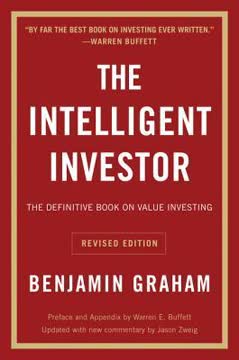
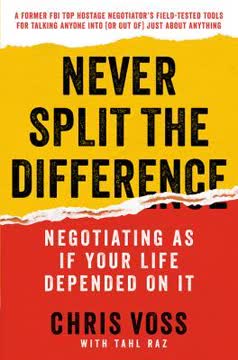


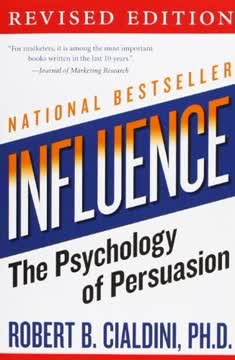


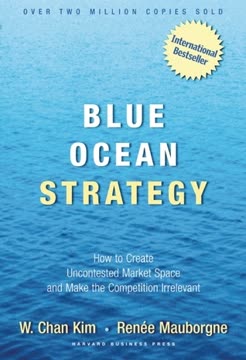

Download PDF
Download EPUB
.epub digital book format is ideal for reading ebooks on phones, tablets, and e-readers.


